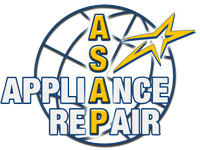Energy Conservation Tips for Appliances
A significant expense for most homeowners is their monthly utilities cost. We’ve listed here steps any homeowner can take to increase the energy efficiency of their appliances and reduce their total monthly expenditures.
Energy Conservation Tips for Refrigerators 
- Most refrigerators cost between $70 and $120 every year to run continuously. Don’t use more than one refrigerator if one is enough to meet your needs.
- Every time you open your refrigerator doors, cold air flows out and the refrigerator has to work to replace that. Only open the doors when necessary and don’t leave them open for longer than necessary.
- Clean your condenser coils with a non-abrasive cloth or brush.
- Optimize your energy use by keeping your refrigerator between 36F and 40F and your freezer between 0F and 4F.
- Replace the refrigerator door seals if the doors are not sealing tightly. Otherwise cold air may be escaping and your costs will go up.
- Ease the work your compressor has to do by letting hot food cool down before putting it in your refrigerator.
- Maintain a well-stocked freezer. The food will absorb the cold air aid the freezer in its job, decreasing the energy the freezer uses to keep the food frozen.
- Whenever possible, avoid placing your refrigerator in direct sunlight or near other sources of heat.
- Placing your refrigerator in an area of your house that does not receive air conditioning, such as a garage, can cause it to work more than it should. When the temperature drops below 60F, your compressor might stop working.
- When possible, place food away from the back wall of the refrigerator as this can frustrate the refrigerator’s natural cooling cycle.
Energy Conservation Tips for Dryers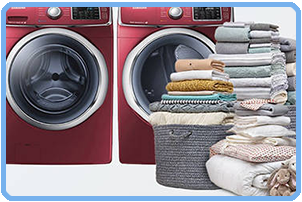
- Don’t overload your dryer. This blocks air flow and causes your dryer to work harder.
- Always clean the lint trap very well before each use to optimize air flow.
- Check your clothes after 20 minutes to ensure you are not running the dryer for longer than necessary. Many dryers also have a moisture-sensor to indicate when a load is actually dry.
- Towels and other heavy/thick items should be dried separately from the rest of your clothes as they dry at a slower rate.
- Ensure that nothing is blocking air flow from the dryer vent.
- A shorter dryer hose will mean the dryer has less work to do to pump out hot air. Also, position the hose so there are no kinks obstructing air flow.
- Whenever possible, dry multiple loads of clothes back-to-back so the dryer can use heat from one load to decrease drying time for the next.
Energy Conservation Tips for Clothes Washers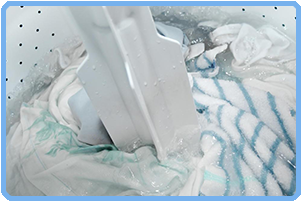
- Adjust the water levels according to the size of the load you are washing.
- If it is feasible in your situation, position your washing machine near your water heater. Your machine will use less energy replacing heat that would otherwise be lost while it is traveling through your pipes.
- Use cold water to wash your clothes whenever you can.
Energy Conservation Tips for Cooking Appliances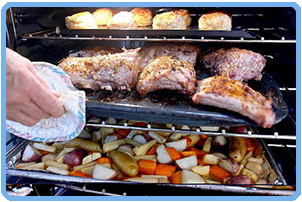
- Use a toaster oven or microwave whenever feasible as they require less energy to operate.
- Cook multiple items at the same time whenever possible.
- Open the oven door as little as possible during use to prevent heat escaping. Use the oven interior light to check on food.
- If heat seems to be escaping during oven use, check the door seals. If the door is not sealing tightly, consider replacing them to reduce energy costs.
- The cookware you use is important. For example, cast iron items dissipate less heat than other materials. Whenever possible, use a lid to trap heat.
- When cooking on the stove top, use a pan that matches the size of the burner. Otherwise heat will escape.
- Oils, food scraps, and other debris on your stove top can capture heat when the oven/stove is being used. Keep your stove top clean to prevent this.
Energy Conservation Tips for Dishwashers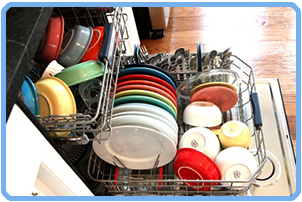
- Clean your dishwasher filter screen regularly so that water flow is not obstructed.
- During Spring and Summer, wash your dishes during the cooler parts of the day.
- If your dishwasher comes equipped with an Energy-Saving Cycle, use it whenever possible.
- Anytime you run the dishwasher, make sure it’s a full load.
- It is often a good idea to clean debris from your dishes in the sink before washing them in the dishwasher. However, they do not need to be perfect, so don’t use more water than necessary.
- When possible, leave the door of your dishwasher open after a load to let the dishes air-dry on their own. Otherwise, use the dishwasher’s Air Dry setting rather than a heated dry.
When Purchasing a New Appliance
- EnergyGuide ratings are a useful way to compare the energy costs of appliances before you purchase them.
- Larger appliances use more energy than smaller appliances (this is particularly true of freezers and refrigerators).
- Side-by-side refrigerators tend to use more energy than top/bottom refrigerators.
- Top-loading washing machines use more energy than their front-loading brothers.
- The older the model of an appliance, the more energy it tends to consume.
Let us know if you have any questions about our energy saving tips! Give us a call at (214) 974-0630 or shoot us an e-mail.
